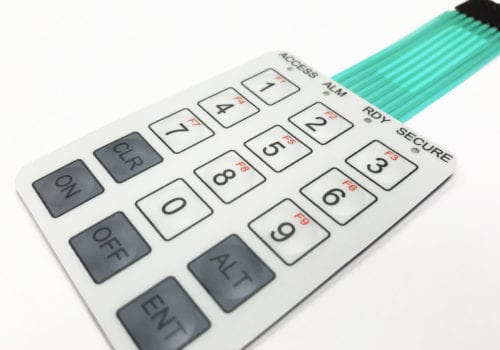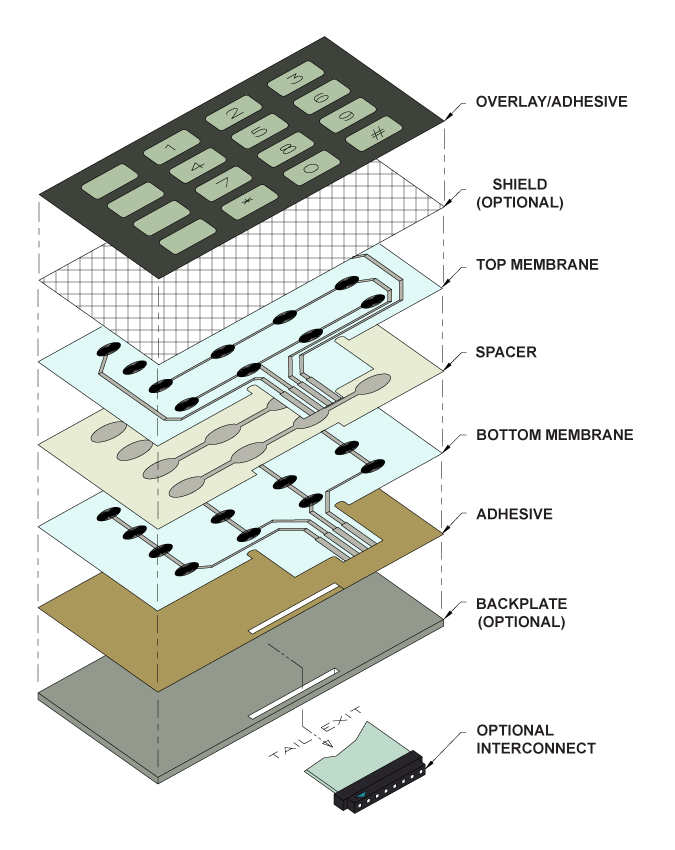How Membrane Switches Over Contribute to the Resilience of Electronic Control Panels
Membrane buttons play a vital role in boosting the toughness of electronic control panels, largely with their multi-layered construction which supplies effective security against ecological factors such as dampness and dust. The lack of moving parts considerably reduces the chance of mechanical failings, making membrane layer changes ideal for demanding applications.
Interpretation of Membrane Buttons

Membrane buttons are made to be thin and light-weight, making them ideal for applications where space is limited. They can be manufactured in different forms, dimensions, and colors, providing versatility in style that fulfills visual and useful needs. Additionally, membrane switches can integrate different modern technologies, such as tactile comments and LED indications, enhancing individual experience.
As a result of their building, membrane switches are typically resistant to dust, wetness, and general wear, contributing to their toughness in requiring settings. Their smooth layout not just assists in simple cleaning but also minimizes the risk of mechanical failure, making them a recommended choice for makers seeking dependable user interfaces in their electronic control panels.
Security Versus Ecological Variables
The style of membrane switches naturally provides a level of security versus numerous ecological variables, which is essential for maintaining capability in tough problems - Membrane Switch. These buttons are generally constructed with layers of flexible products that shield internal parts from wetness, dust, and pollutants. By enveloping the circuitry, membrane layer changes reduce the risk of brief circuits and rust, which can considerably harm efficiency
In addition, using durable adhesives and sealants throughout production boosts their resistance to environmental challenges. Membrane switches can sustain exposure to chemicals and solvents, making them ideal for markets such as food handling and healthcare, where health and tidiness are critical. Their smooth surface area layout likewise stops the buildup of dust and germs, promoting easier cleansing and upkeep.
Temperature changes are one more ecological worry, and membrane layer buttons are engineered to operate successfully throughout a variety of temperatures (Membrane Switch). This flexibility guarantees that control panels remain operational in various settings, from commercial settings to consumer electronic devices
Influence On Customer Interaction
Individual communication with digital control panels is substantially affected by the design and functionality of membrane switches. These buttons give a tactile interface that boosts the general individual experience, allowing for intuitive navigation and control. Their receptive nature makes sure that customers obtain prompt feedback upon activation, which is vital for jobs calling for precision and effectiveness.
Additionally, the smooth surface area of membrane layer switches over promotes very easy cleansing and upkeep, advertising individual self-confidence in the dependability of the user interface. This tidiness is especially important in atmospheres where hygiene is critical, such as medical or food processing setups. In addition, webpage the portable and light-weight style of membrane switches adds to the visual charm of control panels, encouraging user involvement via a modern-day and smooth look.
Additionally, the integration of aesthetic components, such as printed icons and backlighting, helps customers swiftly determine functions, decreasing the finding out curve associated with brand-new tools. As a result, users can run tools better, resulting in enhanced performance and satisfaction. In recap, membrane buttons play a critical function in improving user communication by integrating capability, looks, and convenience of use, inevitably resulting in improved functional efficiency.
Style Flexibility and Modification
Style adaptability and personalization are essential facets of membrane buttons, enabling suppliers to tailor digital control panels to details applications and individual demands. This versatility permits the assimilation company website of various design elements, such as colors, graphics, and structures, which can boost the visual allure and user interaction of the control board.
Membrane buttons can be personalized in shapes and size, accommodating a variety of devices and applications, from industrial machinery to customer electronics. This adaptability makes sure that makers can create user-friendly interfaces that straighten with user expectations and operational needs. Furthermore, the capability to incorporate unique functions such as backlighting or responsive responses better enhances usability, permitting a much more interactive experience.
Moreover, the production process for membrane switches supports the rapid prototyping of designs, allowing makers to repeat and fine-tune their ideas swiftly. This ability not just speeds up the advancement timeline however likewise makes sure that the end product satisfies certain practical and visual requirements.

Cost-Effectiveness and Longevity
Cost-effectiveness and long life are significant benefits of membrane layer switches, making them an attractive option for makers and end-users alike. These buttons are generally more economical to generate than standard mechanical switches, largely because of their streamlined manufacturing processes and the lowered number of components called for. This expense advantage prolongs not just to initial manufacturing however additionally to long-lasting functional expenditures, as membrane buttons typically call for less maintenance and have a reduced failure price.
In addition, the durability of membrane switches over adds to their total worth. Created from sturdy materials, they are resistant to ecological factors such as dampness, dirt, and chemicals, which can lead to premature wear in various other button kinds. The absence of relocating parts lessens mechanical failure, enabling membrane layer changes to keep performance over expanded periods.
This sturdiness is specifically helpful in applications requiring over at this website consistent performance under requiring conditions, such as clinical devices and industrial tools. Ultimately, the combination of cost-effectiveness and long life makes membrane changes a financially practical selection for producers, supplying trusted solutions that stand up to the examination of time while optimizing budgetary considerations.
Conclusion
In verdict, membrane switches dramatically boost the resilience of electronic control board via their durable building and construction and protective features. By effectively securing wiring from ecological threats and minimizing the risk of mechanical failure, these switches guarantee constant performance sought after applications. The seamless style promotes hygiene and simplicity of maintenance, while personalization choices allow customized options for different requirements. Generally, membrane layer changes represent a trustworthy and cost-efficient selection for boosting the long life and performance of electronic control systems.